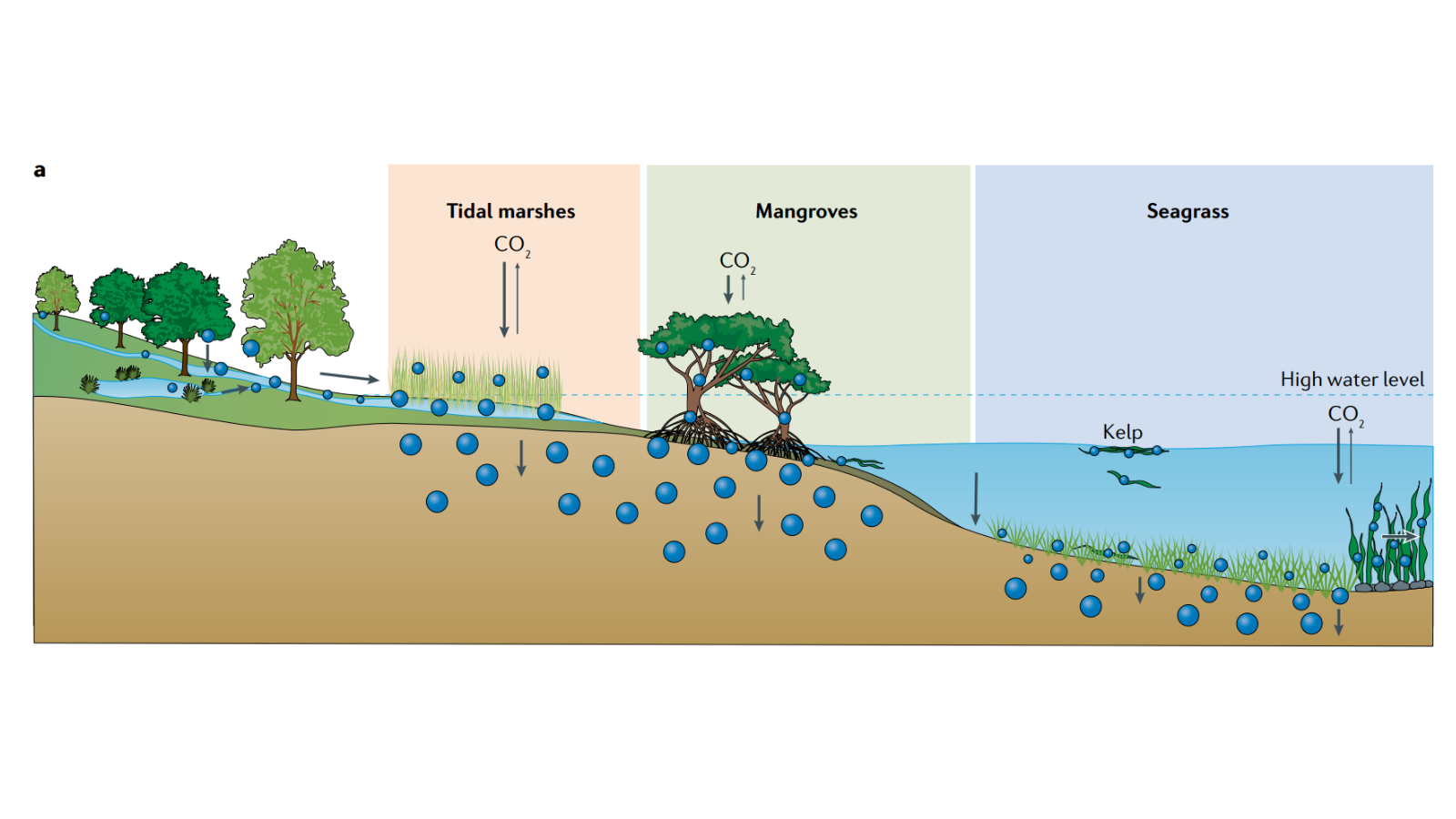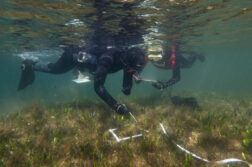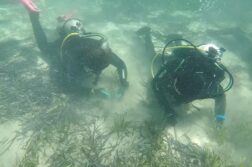A new study, published in the journal Nature Reviews, Earth & Environment, looks globally at the potential of blue-carbon ecosystems, which include mangrove forests, seagrass meadows and marshes, to act as natural carbon sinks and current and future opportunities to protect, restore and conserve these ecosystems
This complete analysis has been possible thanks to the international and multidisciplinary collaboration between the researcher Oscar Serrano of the Center for Advanced Studies of Blanes (CEAB-CSIC), the researchers Peter I. Macreadie and Micheli D.P. Costa of the Center for Integrative Ecology at Deakin University (Australia), researcher Trisha B. Atwood of the Department of Watershed Science and Center for Ecology at Utah State University (USA), researcher Catherine E. Lovelock of the School of Biological Sciences at the University of Queensland (Australia) and researcher Carlos M. Duarte of the Red Sea Research Center at King Abdullah University of Science and Technology (Saudi Arabia).
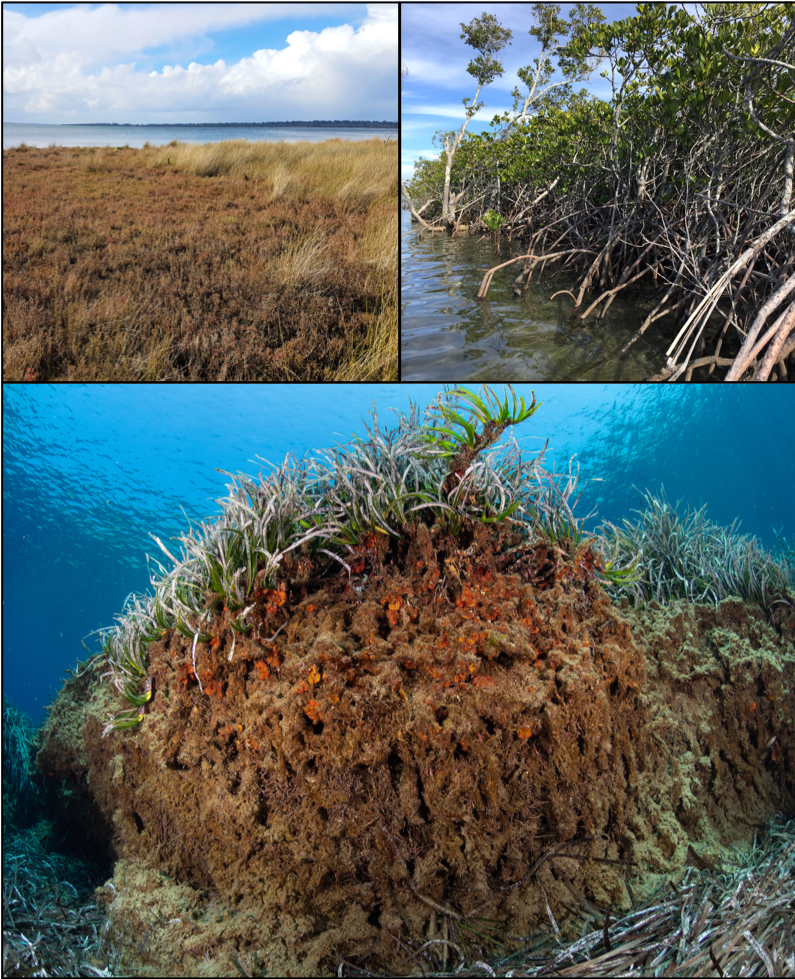
To limit the increase in global average temperature below 1.5 ° C, emissions must be reduced and excess greenhouse gases must be removed from the atmosphere. An emerging option to achieve both goals are natural climate solutions, which include the management and restoration of blue carbon ecosystems so that they can act as efficient carbon sinks (a process known as carbon sequestration). These ecosystems are extensive and form highly productive habitats that house diverse ecological communities, aid human well-being, and protect coasts from erosion and rising sea levels.
Unfortunately, about 50% of the global extent of blue carbon ecosystems has disappeared, which limits the role of these ecosystems in carbon sequestration. In addition, only about 1.5% of the global extent of blue carbon ecosystems is found in marine protected areas (MPAs), regulated areas where blue carbon ecosystems find refuge and conservation.
Global blue carbon stocks
The planet’s blue carbon ecosystems cover between 36 and 185 million hectares within coastal areas around the world and could potentially contain between 9 billion and 33 billion tons of carbon in their soils and biomass.
Mangrove forests are the main focus of research in relation to the distribution of blue carbon stocks. In comparison, seagrass meadows and marshes still lack solid estimates. A better understanding of these factors would improve attempts to estimate and model blue carbon, its contributions to the global carbon cycle, and improve our ability to predict the benefits associated with its conservation and restoration in nationwide greenhouse gas flows.
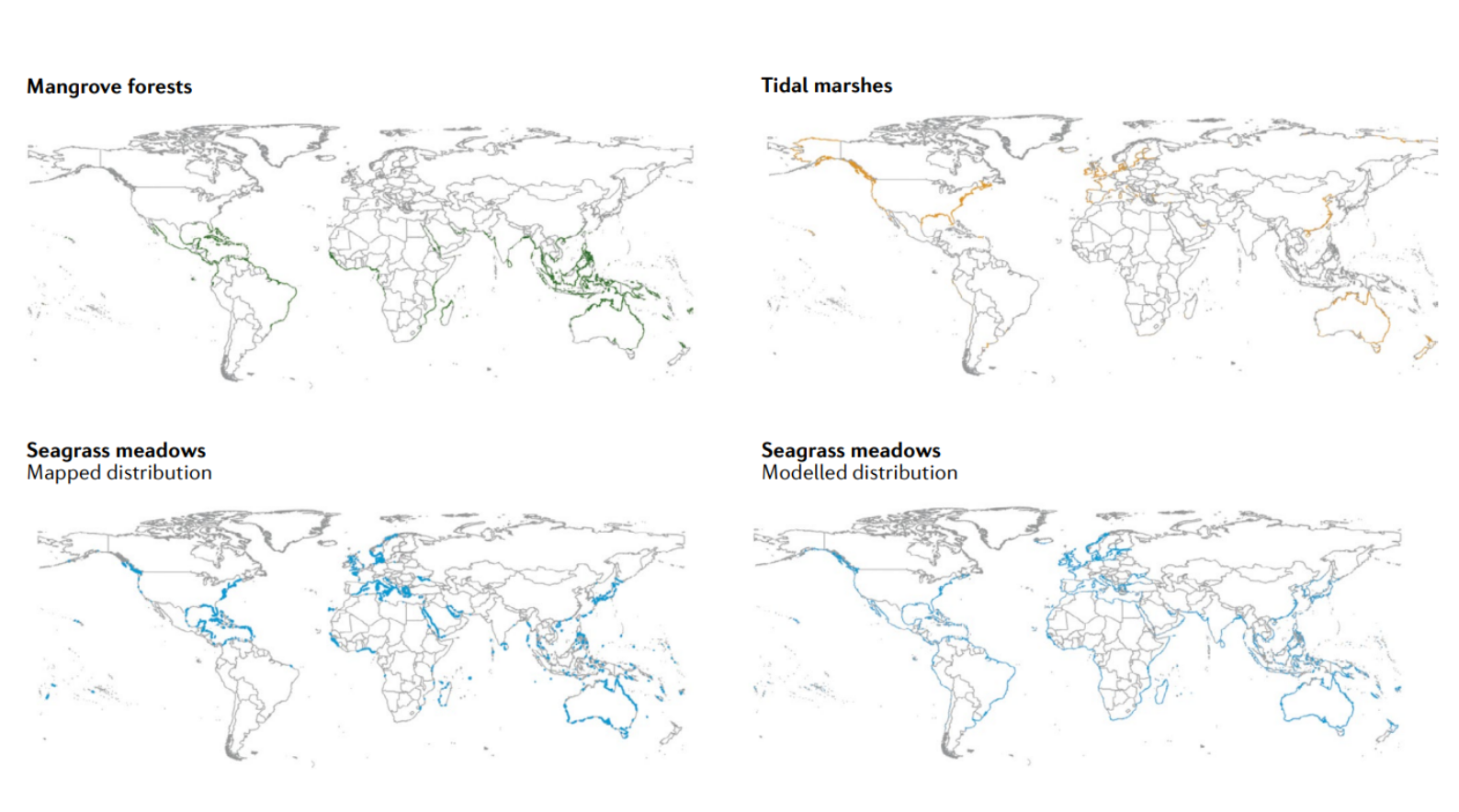
Socioeconomic factors: main cause of the loss of these ecosystems
Quantifying the losses of blue carbon ecosystems is complex due to the lack of data globally regarding their spatial, historical and current extent, and in particular for marine pastures and marshes. Despite the difficulties, the overall losses of wetlands have been estimated at 1-2% per year and those of marine pastures 1.5% per year over the last century.
These generally include physical changes in the landscape, pollution, the presence of invasive species, and climate change. In most cases, the loss of these habitats is associated with socioeconomic factors that are concentrated around the coasts: energy, food, infrastructure expansion, recreation or tourism.
Mapping the global distribution, for example, of mangrove forests, has shown that the recovery potential of these habitats could reach more than 800.000 ha. In contrast, the recovery of marine prairies is more expensive and the success rate lower. However, there is a possibility of restoring areas occupied by seagrass if the pressures that caused the loss disappeared. Still, natural restoration is a very slow process and requires significant improvement in the methods and tools currently available and, therefore, its conservation emerges as an effective tool to promote its role in the annual capture of CO2 and avoid emissions related to the decomposition of the carbon they store.
The blue carbon included in the key points of COP26
The success of the blue carbon strategy since its first power was first known in 2009 is reflected in its growing adoption within the nationally determined contributions (Paris Agreement) and the achievement of those long-term goals. Today, there are blue carbon projects in operation that consist of conserving existing ecosystems, or restoring them in areas where they have disappeared.
In addition, this year, the restoration and protection of natural ecosystems is part of the second key objective of the United Nations Conference on Climate Change (COP26) to be held in Glasgow from 31 October to 12 November 2021. The contributions at the national level embody each country’s efforts to reduce emissions and adapt to the effects of climate change.
Reference article
Macreadie, P.I., Costa, M.D.P., Atwood, T.B. et al. Blue carbon as a natural climate solution. Nat Rev Earth Environ (2021). https://doi.org/10.1038/s43017-021-00224-1


